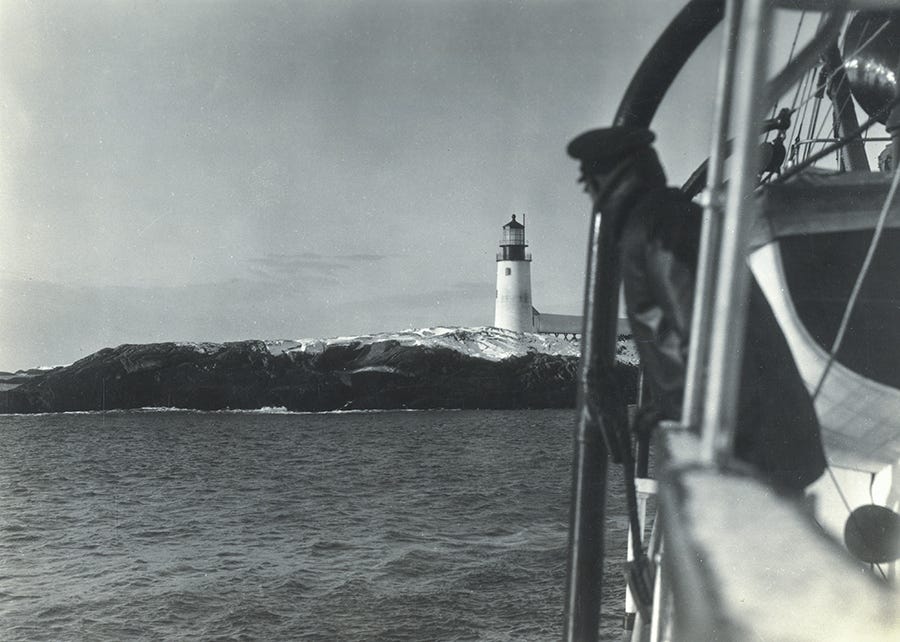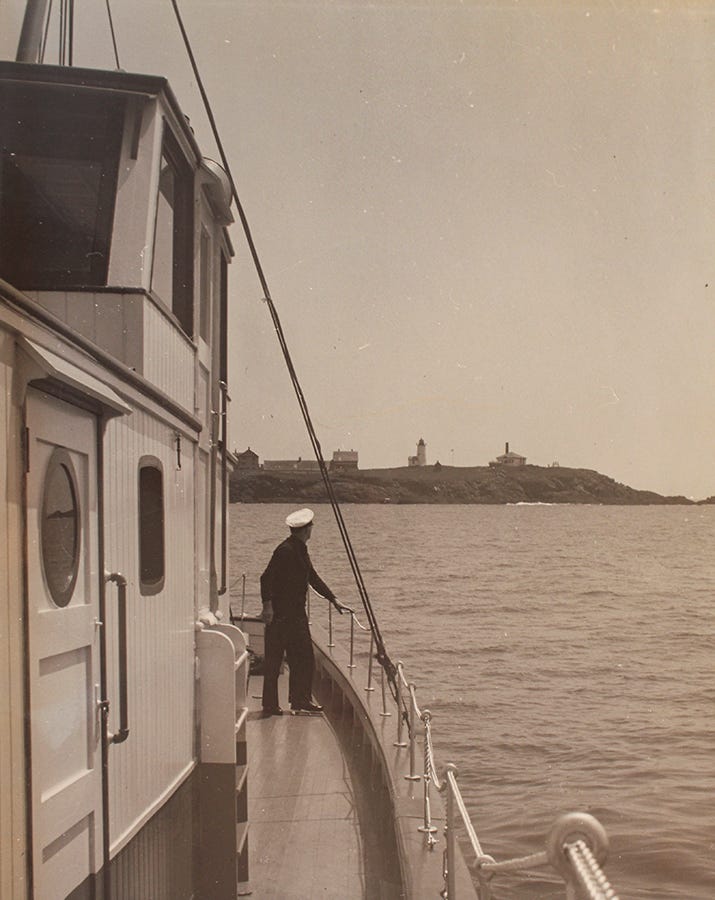Removes All Doubt
This past week, I had the pleasure of speaking to members of The Propeller Club of Portsmouth, New Hampshire, about a variety of lighthouse topics during the club’s March dinner meeting. It was a rewarding experience to say the least.
A highlight of the evening was having the opportunity to talk with a number of professional mariners before and after dinner. The conversations were very enlightening.
Of course, I had to raise the topic of lighthouses with many of them. I was curious as to how they viewed the utilitarian value of lighthouses in this ever-increasing electronic navigational age that we find ourselves in.

Today, mariners and fishermen hold lighthouses in a wide-ranging regard when it comes to their relevance as aids to navigation. This comes as no surprise. For the lifesaving power of lighthouses has been diminishing for decades, beginning with the advent of the radiobeacon in the 1920s.
When marine radar was introduced to ships in the 1940s, this scientific advancement started a trend of relying less on lighthouses for safety. The march into an electronic navigational future took another leap when the Electronic Chart Display and Information Systems was introduced in the 1980s.
Some years later, the Global Position System (GPS) was made available to civilian navigators in 2000. GPS, a satellite-based radio navigation system that provides users with positioning, navigation, and timing services, has greatly improved maritime safety and efficiency.
What does the future hold for electronic navigation? Well, we are already witnessing the slow introduction of virtual aids. How quickly virtual aids supplant physical aids remains to be seen, but one thing is for sure - reliance upon lighthouses is surely not what it used to be.

But are lighthouses obsolete? Hardly!
They may be secondary aids to navigation and their beacons no longer shine forth to sea near as far, but lighthouses are still part of the Federal aids to navigation system, and thus, perform a service to the mariner. And one more thing. If access to electronic navigation is lost for whatever reason, lighthouses will be there to show the way – steadfast and immovable.
Ted Knowles, a retired Portsmouth Naval Shipyard river pilot, and I had some wonderful conversations about the role of lighthouses before, during and after the club’s dinner. In the aftermath of the dinner, Mr. Knowles stated the following:
“I have relied on lighthouses my whole career, starting as a freshman at the Maine Maritime Academy in 1971 until today, whether it has been on ships, submarines, Coast Guard cutters, tugs, or nowadays, on sailboats. They are the one thing that removes all doubt as to your position when out on the water and not sure of your exact position.”
Over the years, I have heard many mariners speak glowingly about the enduring role of lighthouses, but never did someone state it as effectually as Ted Knowles. Lighthouses – they are the one fixed aid to navigation that “removes all doubt.” What a glowing tribute to our venerable sentinels of the sea – I love it!




This type of conversation with those who utilize lighthouses for the purpose for which they were built is a reminder to us today that visual connection with them is a source of security for those who venture out into areas that, although familiar, create risk if one error is made as to offshore positioning. Thank you, Bob! And thank you to Mr. Knowles!
I loved hearing about the enduring influence of lighthouses.